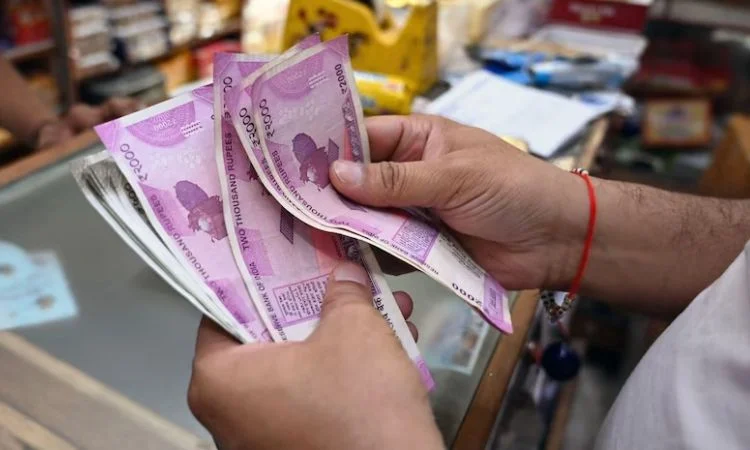The Indian rupee rose to a two-week high, supported by dollar sales by a UK-based bank, while forward premiums fell from their highs following the budget presentation earlier in the day.

The Indian rupee rose to a more than four-month high, and forward premiums reached their highest level since May on expectations that the US Federal Reserve will lower interest rates fast this year.
The rupee was trading at 82.8450 to the US dollar at 12:24 p.m. IST, up from 82.9225 the previous day.
The rupee last had a daily decrease on January 2, when it was at 83.35.
The Indian rupee rose to a two-week high, supported by dollar sales by a UK-based bank, while forward premiums fell from their highs following the budget presentation earlier in the day.
The rupee closed at 82.9650 against the US dollar, up from 83.0425 the previous day. The currency rose to its highest intraday level of 82.9325 since January 16.
“Most of the time, the names we kept hearing on the USD/INR offer were foreign banks,” claimed an FX salesperson from a mid-sized private sector bank. He mentioned a UK-based bank, but added that he was unaware of the specific movement connected to dollar selling.
The recovery in USD/INR from the lows “can be attributed to the typical buying we are used to,” he added, adding that volumes on Thursday were substantially higher than in recent trading sessions.
The rupee was further weighed down by an increase in the dollar index during the European trading session.
US Federal Reserve Chair Jerome Powell hinted on Wednesday that an interest rate decrease at the March meeting was improbable, lowering risk appetite and supporting the safe haven dollar.
Following Powell’s statements, experts at Goldman Sachs and Capital Economics predicted that the Fed will drop interest rates in May rather than March.
The market is now focused on the Bank of England’s policy decision, which is scheduled for later in the day.
“No one expects the Bank to change policy (on Thursday). However, if the BoE adjusts its phrasing to eliminate any implication that policy rates could rise higher, this will be a dovish shift,” ING Bank said in a note.
Meanwhile, USD/INR forward premiums rose at the open, with the one-year reaching 1.90%.
However, premiums fell marginally on the day after India’s gross borrowing projection for fiscal year 2024-2025 was lower than projected by economists.















